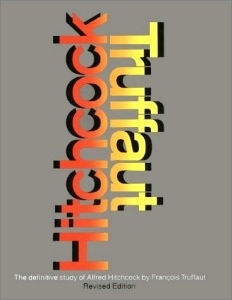Perhaps this could be called a book report of sorts. It would certainly be fitting in this case. At the university I graduated from, the film program actually uses the Hitchcock/Traffaut tome as a textbook. It serves well in that purpose, as much about filmmaking can be learned through his extensive interviews with Francois Truffaut.
The book offers plenty of insight into each one of films, but also his philosophy on all aspects of the filmmaking process as well. Let’s take a look at some of the most distinctive points Hitch makes, sometimes over and over again, about making films.
The term “pure cinema” is used very often by Hitch, and it is that ideal which he seemed perpetually trying to achieve. For him, the most important aspect of the film is the visual presentation and drawing emotion from the audience through those means. One often gets the impression throughout that the dialogue and things of that nature is secondary to all other aspects of a film. This is perhaps a product of having worked in silent films originally. Indeed, the idea of trying to use as few title cards as possible in the days of silent films is mentioned. Hitch even calls silent films the purest form of cinema, due to it’s purely visual nature. The image is what is most powerful, which is why he states film is the greatest art, as it is more universal in its nature than any novel or play. His appreciation of the silent film is clear, even suggesting that all film students should first learn to make silent films due to all the skills obtained from doing so.
Pure cinema to Hitch is also the cutting or assembly film to create montage. References are made to Rear Window as this pure expression of cinema, as the film essentially breaks down to cutting between seeing something through Jimmy Stewart’s eyes and then cutting to his reaction. Hitch is always more interested in telling a story this way, through visual means, than giving that information in dialogue.
There is also no possibility to ever waste space in the frame of a shot, something Hitch makes very clear with numerous examples. Establishing the background or setting is not of interest to him necessarily. If a character enters a room, or has been sitting and gets up, it is still essential in his mind to keep in close on that person. Pulling away would lessen the emotional impact of the scene and perhaps break it all together.
With all of this information about Hitch’s philosophy on filmmaking, his attitude towards actors can be better understood. It is easy to understand why Hitch had no interest in method actors, for instance. Hitch already had in his mind what he needed the actors to accomplish, and not adhering to that would have altered his meticulous plans.
Hitch also puts a great deal of emphasis on suspense over surprise. Although Psycho with its major twist is the exception to the rule, he often speaks of there being a much better and fuller emotional reaction from the audience through suspense rather than surprise. Although surprise or a twist garners a big reaction, it is a short one. Hitch places a particular emphasis on creating suspense through giving an audience a piece of knowledge. That way, tension remains a lot longer. It is this reasoning given for why the audience learns that Judy is really Madeline long before the ending of Vertigo. That allows for a longer period of suspense as we wonder when Scottie will discover the truth. It is Hitch’s belief that you can only get the great emotional reaction from the audience through giving them all the necessary knowledge clearly. It is this reason, then, that we hear the music that will be played at the climax of The Man Who Knew Too Much more than once, so the audience knows full well when the cymbal crash will come. He even states at one point that ideally the whole audience would be able to read and understand the sheet music, to build the tension even further through that knowledge.
I could go on and on about the fascinating insights Hitch makes, such as a short story is better suited to be adapted to a film because both are made experienced in one sitting, unlike a novel. There is a lot overall to be learned from his line of thinking. While it is true that he seems somewhat dismissive of dialogue at times, it is hard to argue with the idea that there should be more emphasis on the power of visual elements to tell a story. Think of some of the greatest moments in Hitchcock films. They are not incredibly poignant lines. They are all elegant pieces of film that visually convey a powerful message, whether it be a passionate kiss or a crop dusting plane approaching. Maybe the biggest lesson to be learned is that more pure cinema is needed in today’s films. It’s hard to disagree with that when it’s spoken by someone who used those methods to control the emotions of audiences for over fifty years.
This book is an essential read to any Hitchcock fan, especially those interested in films in general. It’s a wealth of information and I can’t recommend it strongly enough.
